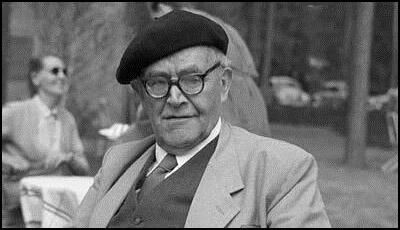On this day on 10th December
On this day in 1541 Thomas Culpeper and Francis Dereham are executed for having affairs with Catherine Howard. King Henry VIII and his party visited York before retuning to London. He arrived back at Hampton Court on 29th October. While the King had been away Archbishop Thomas Cranmer had been contacted by John Lascelles. He told him a story that came from his sister, Mary Hall, who had worked as a maid at Chesworth House. She claimed that while in her early teens Catherine had "fornicated" with Henry Manox, Francis Dereham and Thomas Culpeper. (51)
Cranmer had never approved Henry's marriage to Catherine. He did not personally dislike her but he was a strong opponent of her grandfather, Thomas Howard, 2nd Duke of Norfolk. If Lascelles's story was true, it gave him the opportunity to discredit her supporters, the powerful Catholic faction. With her out of the way Cranmer would be able to put forward the name of a bride who like Anne Boleyn favoured religious reform.
Archbishop Thomas Cranmer had a meeting with Mary Hall. She told him that when she heard about Catherine's relationship with Manox in 1536 she went to see him and warned him of his behaviour. Manox replied: "Hold thy peace, woman! I know her well enough. My designs are of a dishonest kind, and from the liberties the young lady has allowed me, I doubt not of being able to effect my purpose. She hath said to me that I shall have her maidenhead, though it be painful to her, not doubting but I will be good to her hereafter." Hall then told of Catherine's relationship with Dereham. She claimed that for "a hundred nights or more" he had "crept into the ladies dormitory and climbed, dressed in doublet and hose" into Catherine's bed.
On 2nd November, 1541, Archbishop Cranmer, presented a written statement of the allegations to Henry VIII. Cranmer wrote that Queen Catherine had been accused by Hall of "dissolute living before her marriage with Francis Dereham, and that was not secret, but many knew it." Henry reacted with disbelief and told Cranmer that he did not think there was any foundation in these malicious accusations; nevertheless, Cranmer was to investigate the matter more thoroughly. "You are not to desist until you have got to the bottom of the pot." Henry told Thomas Wriothesley that "he could not believe it to be true, and yet, the accusation having once been made, he could be satisfied till the certainty hereof was known; but he could not, in any wise, that in the inquisition any spark of scandal should arise against the Queen."
Henry also gave orders that Catherine Howard was to be confined to her apartments with just Jane Boleyn (Lady Rochford) in attendance. Eustace Chapuys told Charles de Marillac that she was refusing to eat or drink anything, and that she did not cease from weeping and crying "like a madwoman, so that they must take away things by which she might hasten her death". It was also reported that Lady Rochford was guilty of aiding and abetting Catherine to commit high treason.
Sir Richard Rich and Sir John Gage were given the task of questioning Thomas Culpeper, Francis Dereham and Henry Manox. According to Alison Weir, the author of The Six Wives of Henry VIII (2007) Rich and Gage "had supervised the torturing, with instructions to proceed to the execution of the prisoners, if they felt that no more was to be gained from them by further interrogation."
Archbishop Thomas Cranmer visited the Queen in her apartments on 6th November. His main objective was to obtain a confession that she had committed adultery. Without it, no one could proceed against her, for pre-marital fornication was neither a crime nor acceptable grounds for annulling a marriage. He found the Queen "in such lamentation and heaviness as I never saw no creature, so that it would have pitied any man's heart in the world to have looked upon".
Unable to get much sense out of the Queen he returned the following day. Cranmer told her that if she made a full confession the King would probably show mercy. She eventually confessed that Francis Dereham called her "wife" and she used the term "husband" and that it was common gossip in the household that they would marry. He had "many times moved me unto the question of matrimony" but she refused all his proposals. Catherine made a serious mistake with this confession. Under the law of the time, if she had made a pre-contract of marriage with Dereham, her marriage to Henry was invalid and therefore she could not be convicted of adultery.
Queen Catherine admitted that she had on many occasions gone to bed with Dereham. "He hath lain with me, sometimes in his doublet and hose, and two or three times naked, but not so naked that he had nothing upon him, for he had always at the least his doublet, and as I do think his hose also; but I mean naked, when his hose was put down." Catherine claimed that she had not willingly had sexual intercourse with Dereham and that he had raped her with "importunate force". Catherine admitted that the last time she saw Dereham was in 1539. He said he had heard a rumour that she was romantically involved with Thomas Culpeper and the couple were about to marry. She replied: "What should you trouble me thereabouts, for you know I will not have you; and if you heard such report, you know more than I." This was the first time that Thomas Culpeper's name had been mentioned. Archbishop Cranmer knew that Culpeper was a highly favoured gentleman of the King's Privy Chamber. Cranmer was searching for someone who had committed adultery with the Queen. Cranmer now had another candidate and he ordered the arrest and questioning of Culpeper.
Catherine Howard also confessed about her relationship with Henry Manox. "My sorrow I can by no writing express, nevertheless I trust your most benign nature will have some respect unto my youth, my ignorance, my frailness, my humble confession of my faults and plain declaration of the same, referring me wholly unto your Grace's pity and mercy. First at the flattering and fair persuasions of Manox, being but a young girl I suffered him at sundry times to handle and touch the secret parts of my body, which neither became me with honesty to permit, nor him to require."
Archbishop Thomas Cranmer thought this confession would please Henry VIII as he could now see his marriage to Catherine was invalid and he would be free to marry again. However, Henry wanted more time to think about the situation. He therefore ordered Catherine to be sent to the former Abbey of Syon at Brentford. He also told Cranmer to arrange for all those who were involved in the affair to be sent to the Tower of London to await questioning.
Manox was the first to be cross-examined. He told them he had been employed by the Duchess Agnes Howard to teach Catherine music and singing and admitted having tried to seduce her. When the Duchess discovered them kissing she had beaten them both and commanded that they should never to be alone together again. This had not deterred Manox, and on another occasion she had agreed he might caress her private parts. In his words he had "felt more than was convenient". However, he told his interrogators: "Upon his damnation and most extreme punishment of his body, he never knew her carnally". The Privy Council, seeing that he had committed no crime, released him.
As Kelly Hart has pointed out, Catherine was highly unlikely to have become too involved with Manox. She knew that to marry a man of his background would have been to cause her serious problems: "They (Catherine and Manox) could only have married if they had eloped, to lead an impoverished life. In an age where a woman might starve to death if she married a man of little means, Catherine was understandably aiming for someone who could keep her future children in luxury."
Thomas Wriothesley interviewed the Queen's servants. Katherine Tylney and Margaret Morton both gave evidence that Thomas Culpeper met the Queen in Lady Rochford's chamber. Morton testified that while at Pontefract Castle in August 1541, Lady Rochford locked the room from inside after both Catherine and Culpeper went inside. Morton also said that she "never mistrusted the Queen until at Hatfield I saw her look out of her chamber window on Master Culpeper, after such sort that I thought there was love between them". On another occasion the Queen was in her closet with Culpeper for five or six hours, and Morton thought "for certain they had passed out" (a Tudor euphemism for orgasm).
Jane Boleyn (Lady Rochford) was interviewed in some depth. She had previously given evidence against her husband, George Boleyn, and sister-in-law, Anne Boleyn. She claimed that at first Catherine rejected the advances of Culpeper. She quoted her as saying: "Will this never end?" and asking Lady Rochford to "bid him desire no more to trouble me, or send to me." But Culpeper had been persistent, and eventually the Queen had admitted him into her chamber in private. Lady Rochford was asked to stand guard in case the King came. Rochford added that she was convinced that Culpeper had been sexually intimate "considering all things that she hath heard and seen between them".
Antonia Fraser, the author of The Six Wives of Henry VIII (1992), is highly critical of the evidence provided by Lady Rochford: "Lady Rochford attempted to paint herself as an innocent bystander who had somehow been at the other end of the room where the Queen was meeting Culpeper, without knowing what was going on. Catherine on the other hand reversed the image and described a woman, like Eve, who had persistently tempted her with seductive notions of dalliance; while Culpeper too took the line that Lady Rochford had 'provoked' him into a clandestine relationship with the Queen... Once again, as with the technicalities of the Queen's adultery, absolute truth - and thus relative blame - is impossible to establish."
Mary Hall testified that she saw Catherine and Culpeper "kiss and hang by their bills (lips) together and as if they were two sparrows". Alice Restwood said that there was "such puffing and blowing between (Catherine and Dereham) that she was weary of the same". Margaret Benet admitted that "she looked out at a hole of a door and there saw Dereham pluck up (Catherine's) clothes above her navel so that he might well discern her body". Benet went on to say she heard the couple talk about the dangers of her becoming pregnant. She heard "Dereham say that although he used the company of a woman... yet he would get no child". Catherine replied that she also knew how to prevent having children. She told Dereham that she knew "how women might meddle with a man and yet conceive no child unless she would herself". David Starkey has asked the question: "Was this confident contraceptive knowledge? Or merely old-wives' tales? In either case, it explains why Catherine was prepared to have frequent sex with no apparent heed to the risks of pregnancy."
Thomas Culpeper appeared before the Privy Council to give evidence in his defence. He claimed that although Lady Rochford had "provoked him much to love the Queen, and he intended to do ill with her and likewise the Queen so minded to do with him, he had not passed beyond words". Edward Seymour told Culpeper that his intensions towards Queen Catherine were "so loathsome and dishonest" that in themselves they would be said to constitute high treason and so therefore he deserved to die.
The trial of Culpeper and Dereham began on 1st December, 1541 in Westminster Hall. Dereham was charged with "presumptive treason" and of having led the Queen into "an abominable, base, carnal, voluptuous and licentious life". He was accused of joining the Queen's service with "ill intent". It was claimed that Dereham once told William Damport that he was sure he might still marry the Queen if the King were dead. Under the 1534 Treason Act, it was illegal to predict the death of the King.
Culpeper was accused of having criminal intercourse with the Queen on 29th August 1541 at Pontefract, and at other times, before and after that date. During the trial Culpeper changed his plea to guilty. Dereham continued to plead his innocence but both men were found guilty. Thomas Howard, the Duke of Norfolk, sentenced them to be drawn on hurdles to Tyburn "and there hanged, cut down alive, disembowelled, and, they still living, their bowels burnt; the bodies then to be beheaded and quartered".
Charles de Marillac reported that Culpeper especially deserved to die, even though he did not admit to having full intercourse with Catherine, "for he confessed his intention to do so, and his confessed conversations, being held by a subject to a queen, deserved death". Marillac explained that Henry had "changed his love for the Queen into hatred, and taken such grief at being deceived, that of late it was thought he had gone mad". Henry also suggested that she was such a "wicked woman" that she "should have torture in her death".
Francis Dereham was tortured on 6th December. According to Thomas Wriothesley he admitted that he had said that he might "still marry the Queen if the King were dead". He also admitted having sexual intercourse with Catherine Howard in 1538 but he vehemently denied committing adultery with the Queen. Later that day, the King was asked if he would change the sentence to beheading. He agreed for Culpeper but stated that Dereham "deserved no mercy". The decision was one based on the background of the two men. Men of the higher class were rarely "hung, drawn and quartered".
Culpeper were executed on 10th December 1541. Culpeper asked the crowd to pray for him. No block had been provided. He knelt on the ground by the gallows, and was decapitated with one stroke of the axe. Dereham then suffered the full horror of being hanged, castrated, disembowelled, beheaded and quartered. Both heads were set up on pikes above London Bridge.
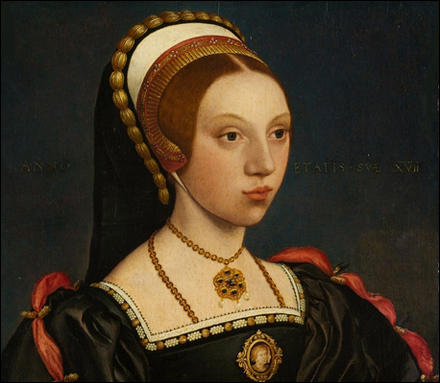
On this day in 1874 illustrator Charles Falls was born in Fort Wayne, Indiana. As a young man he moved to Chicago where he a sketch artist for the Chicago Tribune. Later he became a freelance artist and in 1900 he moved to New York City where he illustrated many different books for various authors, as well as various magazines and posters.
During the First World War he produced war propaganda for the Committee on Public Information's Division of Pictorial Publicity. Falls illustrated posters throughout the war that promoted military recruitment. The most famous of these was Books Wanted .that depicted a soldier carrying a stack of books. The caption reads: Books wanted for our men in camp and over there. Take your gifts to the public library (1918). He also produced the poster Join Me. The First to Fight on Land and Sea: US Marines (1918).

On this day in 1896 Alfred Nobel died. Nobel was born in Stockholm, Sweden in 1833. The son of an engineer, he moved in his childhood to Russia, where his father was working on an underwater mine. Alfred studied Chemistry in Paris and worked for a time in the USA before returning to Sweden in 1859.
In 1866 Nobel produced what he believed was a safe and manageable form of nitroglycerin called dynamite. He established his own factory to produce it but in 1864 an explosion at the plant killed Nobel's younger brother and four other workers. Deeply shocked by this event, he now worked on a safer explosive and in 1875 came up with gelignite.
Other inventions followed including ballistite, a form of smokeless power, artificial gutta-percha and a mild steel for armour-plating. As well as manufacturing goods, Nobel also successfully obtained oil from the Baku in Aberbaijan.
By the time Alfred Nobel died on December 10th 1896, he had obtained a massive fortune. He left instructions that most of his money should be used to endow annual Nobel prizes. The very first awards were made in 1901 on the fifth anniversary of Nobel's death.
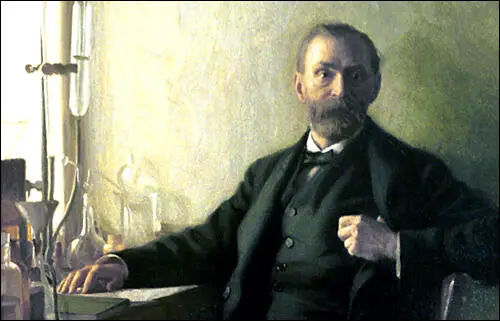
On this day in 1915 suffragist Adella Hunt-Logan committed suicide. Adella fell ill and was admitted to Battle Creek Sanitarium for treatment. She returned to the Tuskegee Institute after hearing that Booker T. Washington was seriously ill. Adella's depression increased after the death of Washington and she jumped to her death from the top floor of one of the school's buildings.
Adella Hunt, the daughter of a black woman, was born in Sparta, Georgia, on 10th February, 1863. Her father, Henry Hunt, a white farmer, served in the Confederate Army during the Civil War. He did not live with his eight children but he did help to pay for Adella to be educated at Sparta's Bass Academy and Atlanta University.
In 1883 Adella taught at the American Missionary School before joining Booker T. Washington and Olivia Davidson at the Tuskegee Institute. She taught English and Social Sciences and served as Tuskegee's first librarian.
Adella married Warren Logan, a fellow teacher at the Tuskegee Institute in 1888. Over the next few years she gave birth to nine children. However, only six survived to adulthood.
A strong supporter of women's suffrage, Adella led monthly discussions on the subject at the Tuskegee Woman's Club. She also amassed a large library of reading materials about suffrage. She also lectured at regional and national conferences of the National Association of Colored Women's Clubs. Adella also wrote about women's rights in Crisis, a journal produced by William Du Bois and the National Association for the Advancement of Coloured People (NAACP).
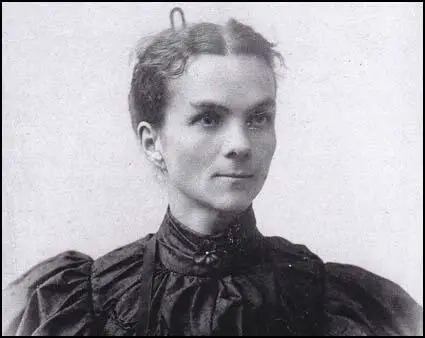
On this day in 1921 the first meeting of the English Ladies Football Association took place. At this time there were approximately 150 ladies' football clubs in England. The representatives of 25 clubs attended the initial meeting. This rose to 60 at the next meeting held in Grimsby.
The ELFA issued a statement that argued: "The Association is most concerned with the management of the game, and intend to insist that all clubs in the Association are run on a perfectly straightforward manner, so that there will be no exploiting of the teams in the interest of the man or firm who manages them."
The ELFA introduced its own set of rules and regulations. This included reducing the size of the pitch. It was also decided to use a lighter football, a change that was eventually adopted by the Football Association. Referees of women's matches were also given "greater powers concerning the use of ball skills rather than brawn".
ELFA also made a rule that any club that became affiliated to the ELFA would not be allowed to play against a team that was not a member. It was believed that the best way of making ELFA strong was to make it difficult for non-members to find matches.
ELFA also took measures to stop a club like Dick Kerr Ladies from developing again in the future. Alfred Frankland had obtained the best players by persuading them to play for his team. ELFA therefore decreed that no woman was to play for a club that was more than twenty miles from her home. The measure did a great deal to encourage clubs to develop local talent.
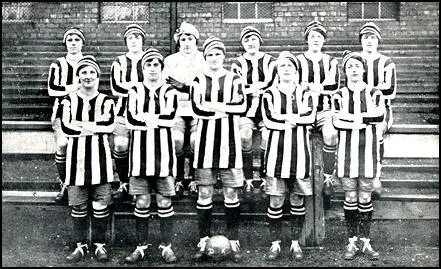
On this day in 1928 Charles Rennie Mackintosh died. Mackintosh, the son of a police superintendent, was born in Glasgow in 1868. He was educated at the Allan Glen's School before starting his architectural apprenticeship. He attended evening classes at the Glasgow School of Art and in 1889 joined the firm of Honeymen and Kepple.
Although Mackintosh's architectural output was fairly small he had a considerable influence on European design. Especially popular in Austria and Germany, Mackintosh's work was highly acclaimed when it was shown at the Vienna Secession Exhibition in 1900. It was also exhibited in Budapest, Munich, Dresden, Venice and Moscow.
An outstanding exponent of the Art Nouveau style, Mackintosh was responsible for the Glasgow School of Art (1897-99), its library block (1907-09), the Cranston Tearooms and Hill House in Helensburgh. His work, often done with his wife, Margaret Macdonald, included interior design, textiles, furniture and metalwork.
In 1914 Mackintosh and left Scotland and afterwards did no more major architectural work. While in London he designed fabrics, book covers and furniture. He moved to France in 1923 and over the next four years produced a series of beautiful watercolours.
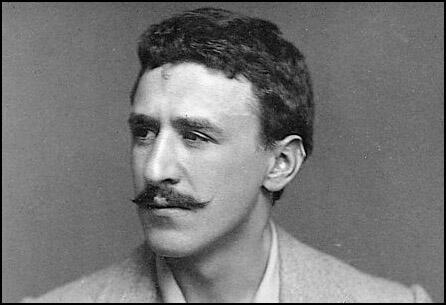
On this day in 1935 details of the Hoare-Laval Pact became public knowledge. In October 1935 Pierre Laval joined with Samuel Hoare, Britain's foreign secretary, in an effort to resolve the crisis created by the Italian invasion of Ethiopia. The secret agreement, known as the Hoare-Laval Pact, proposed that Italy would receive two-thirds of the territory it conquered as well as permission to enlarge existing colonies in East Africa. In return, Ethiopia was to receive a narrow strip of territory and access to the sea. Details of the Hoare-Laval Pact was leaked to the press on 10th December, 1935. The scheme was widely denounced as appeasement of Italian aggression and Laval and Hoare were both forced to resign.
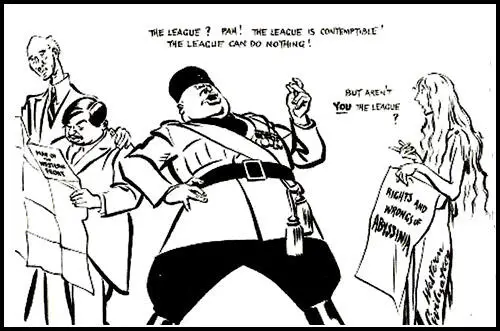
On this day in 1936 Edward VIII renounces "the throne". In 1931 Edward was having an affair with Lady Thelma Furness. On the 10th January, 1931, Furness invited Wallis Simpson and her husband, Ernest Simpson, to her country house at Melton Mowbray. Edward was fascinated by Wallis and it was not long before he was having an affair with her.
Colin Matthew has pointed out: "By 1934 the prince had cast aside both Lady Furness and Freda Dudley Ward (the latter cut off without, apparently, any personal farewell). The prince saw Mrs Simpson as his natural companion in life, both sexually and intellectually.... A man accustomed to get his way, when he knew what it was that he wanted, the prince of Wales seems to have thought from 1934 onwards that matters would turn out as he wished. Though he appears from an early stage to have wanted Wallis as his queen, he made no effort to test or prepare the ground, even with those whose support would be vital. Nor do those around him seem to have sounded him as to his intentions (and as his accession was clearly imminent they could not have been blamed if they had done so). Neither the prince's father nor mother seems to have raised with him either the affair or its likely result. Thus the prince of Wales's affair with Mrs Simpson, pursued with a passion evident to all who observed it, occurred in a political and constitutional limbo."
Wallis Simpson left her husband and went to live in an apartment in Bryanston Court. Also living in the building was Princess Stephanie von Hohenlohe. The two women soon became close friends. This was unfortunate for Simpson because of a tip off from French Intelligence, MI6 was intercepting Princess Stephanie's correspondence and tracking her movements in and out of the country since early in 1928.
In December 1932 a number of European newspapers had carried allegations of espionage against Princess Stephanie. The French newspaper, La Liberté, claimed that she had been arrested as a spy while visiting Biarritz. It asked the question: "Is a sensational affair about to unfold?" Other newspapers took up the story and described her as a "political adventuress" and "the vamp of European politics". These stories were probably the result of leaks from the French intelligence services. However, she had not been arrested. According to a 2005 declassified document, the British secret service circulated a government report stating that files had been found in the princess' flat in Paris showing she had been commissioned by the German authorities to persuade Lord Rothermere to campaign in his newspapers for the return to Germany of territory and colonies ceded in the end of the First World War. Philip Ziegler has argued: "The precise nature of Mrs Simpson's appeal to the prince of Wales could only be understood by him; probably he hardly understood it himself. It is sufficient to say that by early 1934 the prince had become slavishly dependent on her and was to remain so until he died. The courtiers at first thought that this was just another of his recurrent infatuations, but throughout 1935 they became increasingly alarmed as her role became more prominent and impinged on the performance of his duties."
The government was also aware that Wallis Simpson was in fact involved in other sexual relationships. This included a married car mechanic and salesman called Guy Trundle and Edward Fitzgerald, Duke of Leinster. More importantly, they had evidence that Wallis Simpson was having a relationship with Joachim von Ribbentrop, the German Ambassador to Britain. The FBI definitely believed this was the case and one report suggested that he had sent a bouquet of seventeen red roses to Princess Stephanie's flat in Bryanston Court because each bloom represented an occasion they had slept together.
Chips Channon also believed the couple were having an affair. He recorded in his diary: "Much gossip about the Prince of Wales' alleged Nazi leanings; he is alleged to have been influenced by Emerald Cunard (who is rather eprise with Herr Ribbentrop) through Wallis Simpson." MI5 were also concerned by Simpson's relationship with Ribbentrop and was now keeping her under surveillance. Collin Brooks noted in his diary: "The suggestion has been made in many quarters that he could, if he wished, make himself the Dictator of the Empire."
Paul Foot has argued: "The Prince was proud of his German origins, spoke German fluently, and felt an emotional, racial and intellectual solidarity with the Nazi leaders... Such sympathies were of course common, at least for a while, in London society, but when others began to waver, the Prince of Wales remained steadfast. He asked the Germans to fix up a special dinner for him at the German Embassy, as a special mark of his solidarity with their government. The Germans, on instructions from Berlin, invited Mrs Simpson, who was then his paramour." Robert Bruce-Lockhart has reported the conversation that took place between Prince of Wales and the grandson of the former Kaiser, Prince Louis-Ferdinand: "The Prince of Wales was quite pro-Hitler and said it was no business of ours to interfere in Germany’s internal affairs either re Jews or anything else, and added that the dictators are very popular these days, and that we might want one in England before long."
George V died on 20th January, 1936. Edward now became king and his relationship with Wallis Simpson was now being reported in the foreign press. The government instructed the British press not to refer to the relationship. Wallis divorced Ernest Simpson in 1936. He told his friends that he believed the new king wished to marry his wife. The prime minister, Stanley Baldwin, urged the king to consider the constitutional problems of marrying a divorced woman.
Although the king received the political support from Winston Churchill and Lord Beaverbrook, he was aware that his decision to marry Wallis Simpson would be unpopular with the British public. Cosmo Gordon Lang, the Archbishop of Canterbury also made it clear he was strongly opposed to the king's relationship. Ribbentrop described him as "a kind of English national socialist".
King Edward VIII did receive support from Oswald Mosley. He attacked those criticised his relationship with Mrs. Simpson: "He who insults the British Crown thus insults the history and achievements of the British race... The King has been loyal and true to him." Mosley went on to state that the king deserved, after many years' faithful service as Prince of Wales, the right to live in private happiness with the woman he loved."
Robert Vansittart, Permanent Under-Secretary at the Foreign Office, had received information that Wallis Simpson was passing information to the German government, and conveyed his fears to Prime Minister Stanley Baldwin. A FBI report at the time stated: "Certain would-be state secrets were passed on to Edward, and when it was found that Ribbentrop... actually received the same information, immediately Baldwin was forced to accept that the leakage had been located." Foreign Secretary Anthony Eden decided to restrict information shown to the King. The authors of Baldwin (1969) have pointed out: "Mrs. Simpson... was under close scrutiny by Sir Robert Vansittart and both she and the King would not have been pleased to realise that the Security Services were keeping a watching brief on her and some of her friends. The Red boxes sent down to Fort Belvedere were carefully screened by the Foreign Office to ensure that nothing highly secret should go astray. Behind the public facade, behind the King's popularity, the Government had awakened to a danger that had nothing to do with any question of marriage."
Walter Monckton later explained: "Before October 1936 I had been on terms of close friendship with King Edward, and, though I had seldom met her save with the King, I had known Mrs Simpson for some considerable time and liked her well. I was well aware of the divorce proceedings which led to the decree nisi pronounced by Mr Justice Hawke at Ipswich in October. But I did not, before November 1936, think that marriage between the King and Mrs Simpson was contemplated. The King told me that he had often wished to tell me, but refrained for my own sake lest I should be embarrassed. It would have been difficult for me since I always and honestly assumed in my conversations with him that such an idea (which was suggested in other quarters) was out of the question. Mrs Simpson had told me in the summer that she did not want to miss her chance of being free now that she had the chance, and the King constantly said how much he resented the fact that Mrs Simpson's friendship with him brought so much publicity upon her and interfered with her prospects of securing her freedom. I was convinced that it was the King who was really the party anxious for the divorce, and I suspected that he felt some jealousy that there should be a husband in the background."
The FBI continued to keep Wallis Simpson under surveillance and in one report to President Franklin D. Roosevelt he stated: "It has been ascertained that for some time the British Government has known that the Duchess of Windsor was exceedingly pro-German in her sympathies and connections, and there is a strong reason to believe that this is the reason why she was considered so obnoxious to the British Government that they refused to permit Edward to marry her and maintain the throne... Both she and the Duke of Windsor have been repeatedly warned by representatives of the British Government that in the interest of the morale of the British people, they should be exceedingly circumspect in their dealings with the representatives of the German Government."
Clement Attlee the leader of the Labour Party, was strongly opposed to Wallis Simpson becoming Queen. "As a Privy Councillor I attended the meeting in St. James's Palace of the Accession Council....I thought that King Edward looked very nervous and ill-at-ease. I remember Baldwin expressing to me his anxiety for the future and his doubts as to whether the new King would stay the course. I had met him on several occasions, when he had been most charming, and I was struck by his genuine solicitude for the unemployed... It was not until a late stage that I became aware of the position which had arisen with regard to Mrs. Simpson. Then I went to Baldwin and asked him for information. Later, as the crisis developed, he invited me to tell him what I thought would be the Labour attitude to the various proposals which were being made, in particular that of a morganatic marriage. The talk was confidential, so that I could not consult the Party or even my intimate colleagues. I had to give him what, in my judgment, would be the reactions of the Party."
On 20th October, 1936, Stanley Baldwin met King Edward VIII at the king's country house, Fort Belvedere. The King once again stated his intention to marry Wallis Simpson. Baldwin replied that if this happened he would be forced to resign as Prime Minister. Mrs Simpson's biographer, Philip Ziegler, has argued: Once Mrs Simpson realized that marriage to her would cost the king his throne, she tried to change his resolve. Anticipating much hostile publicity when the story broke in the United Kingdom, she retreated first to Fort Belvedere, and then to the south of France. From there, in a series of distraught telephone calls, she tried to persuade Edward not to abdicate, even if this meant giving her up. She accomplished nothing; this was the only subject on which she was unable to dominate her future husband."
In a debate on the constitutional crisis in the House of Commons, the Communist Party MP, William Gallacher, commented: "The King and Mrs Simpson do not live in a vacuum. Sinister processes are continually at work... The Prime Minister told us he was approached about a morganatic marriage... but he did not tell us who approached him.... It is obvious that forces were encouraging... what was going on... I want to draw your attention to the fact that Mrs Simpson has a social set, and every member of the cabinet knows that the social set of Mrs Simpson is closely identified with a certain foreign government and the ambassador of that foreign government."
On 10th December, 1936, the king signed a document that stated he he had renounced "the throne for myself and my descendants." The following day he made a radio broadcast where he told the nation that he had abdicated because he found he could not "discharge the duties of king as I would wish to do without the help and support of the woman I love." On the night of his abdication, 500 Blackshirts shouting support and giving the Fascist salute gathered outside Buckingham Palace chanting, "We Want Edward". The following day, Oswald Mosley demanded the question of the abdication be put to the British people in a referendum.
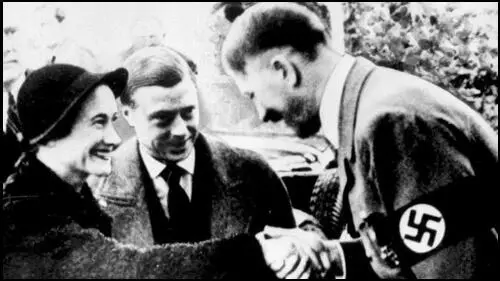
On this day in 1954 women's suffragist Minnie Baldock died. Minnie Rogers was born in London on 20th November, 1864. As a girl she worked in a shirt factory. After her marriage to Harry Baldock she had two sons, Jack and Harry. She was a member of the Independent Labour Party and her husband was a local councillor in West Ham. During this period she became friends with Dora Montefiore and Charlotte Despard.
Along with Keir Hardie, her local MP, she held a public meeting in 1903 to complain about the low pay of women in the area. She was also involved in the administration of the West Ham Unemployed Fund. In April 1905, Baldock became an ILP candidate in the election for the West Ham Board of Guardians.
Baldock joined the Women's Social and Political Union (WSPU) and on 19th December 1905 she joined forces with Dora Montefiore and Annie Kenney to heckle Herbert Asquith, while he was making a speech in Queen's Hall. Baldock joined with Kenney to repeat the performance when Henry Campbell-Bannerman appeared at a Liberal Party rally at the Royal Albert Hall on 21st December. They were ejected but not arrested. The following day Baldock, Kenney and Teresa Billington-Greig, called on Campbell-Bannerman at his house at Belgrave Square. He told them that he would be dealing soon with the question of women's suffrage.
On 29th January 1906, Baldock established the Canning Town branch of the WSPU. It was an attempt to recruit working-class women to the cause. Over the next few months Baldock arranged for Emmeline Pethick-Lawrence, Annie Kenney, Flora Drummond, Dora Montefiore, Selina Cooper, Teresa Billington-Greig and Marie Naylor to address the members of the group.
On 23rd May 1906, Dora Montefiore sent her a postcard saying: "Am resisting bailiff who has come to distrain for income tax, and the house is besieged. Tell the poor women I am doing it to help them." In response, Baldock organised a demonstration of about fifty women outside Mrs Montefiore's barricaded house in Hammersmith.
Later that year Minnie Baldock joined Annie Kenney, Mary Gawthorpe, Nellie Martel, Helen Fraser, Adela Pankhurst and Flora Drummond as WSPU full-time organizers. Baldock now began to tour the country. According to Elizabeth Crawford, the author of The Suffragette Movement (1999), Emmeline Pethick-Lawrence "sent her a postal order for 30 shillings to cover her expenses while holding meetings in Long Eaton in Derbyshire."
Minnie Baldock was arrested during a demonstration outside the House of Commons in February 1908. She was sentenced to a month in Holloway Prison. The historian, June Purvis, has pointed out: "Her anxieties about her small son, left at home with his father, were somewhat alleviated by the knowledge that union members outside would offer help." For example, Maud Arncliffe Sennett sent a parcel of toys for her two boys.
In February 1909 Baldock worked alongside Annie Kenney, Clara Codd, Marie Naylor, Marie Naylor, Vera Holme and Elsie Howey in the West of England campaign. During this period she visited Eagle House near Batheaston, the home of fellow WSPU member, Mary Blathwayt. Her father, Colonel Linley Blathwayt was sympathetic to the WSPU cause and he built a summer-house in the grounds of the estate that was called the "Suffragette Rest". In April 1910, Colonel Blathwayt sent her a hamper of plants, to brighten her East-End garden.
Minnie Baldock continued to work for the WSPU until July 1911 when she became seriously ill and was operated on for cancer by Dr Louisa Aldrich-Blake at the New Hospital for Women. She was visited in hospital by Christabel Pankhurst and Mabel Tuke wrote to her pointing out: "I am sure we can fix up a country visit for you when you come out of hospital with some kind member of the WSPU." However, when she left hospital she went to stay with Minnie Turner in Brighton.
Minnie Baldock never returned to work for the WSPU. This might have been because she disapproved of the WSPU arson campaign because she continued to be a member of the Church League for Women's Suffrage. She was also in contact with Edith How-Martyn of the Women's Freedom League. In January 1913, Minnie moved to Southampton with her husband. Minnie Baldock, during her later years, lived at 73 Lake Road, Hamworthy, near Poole.
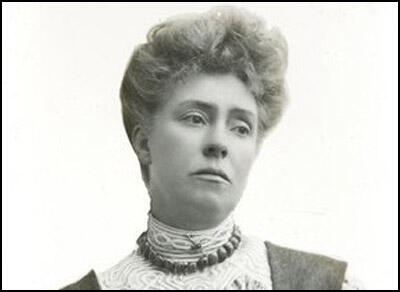
On this day in 1968 Karl Barth died. Barth, the son of a minister of the Swiss Reformed Church, was born in Basle on 10th May, 1886. He studied theology in Berlin, Tubinggen and Marburg. In 1913 Barth married Nelly Hoffman and over the next few years the couple had five children. In 1919 Barth published Epistle to the Romans.
Barth became professor of theology at Gottingen (1921-25) and Munster (1925-30). In 1930 he was appointed professor at theology at Bonn University. While in Germany he joined forces with Martin Niemöller and Dietrich Bonhoffer to establish what became known as the Confessional Church.
A committed socialist, Barth was the leading figure behind the Barmen Declaration in 1934. This statement explained why Christians should oppose the policies of the Nazi Party. Barth lost his post at Bonn University when he refused to take an unconditional oath to Adolf Hitler. He now returned to Switzerland and in 1935 became professor of theology at Bonn University.
Books by Barth include The Word of God and the Word of Man (1924), Credo (1935), Knowledge of God and the Service of God (1938), Evangelical Theology (1962) and several volumes of Church Dogmatics (1932-67).
